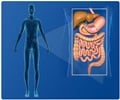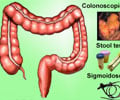Computed tomographic colonography (CTC) depicts cancers and other clinically important conditions that would be missed with standard colonoscopy and at very little additional cost, according to a study in the August issue of Radiology.
"The chance of finding cancer outside the colon may be as significant as the chance of finding cancer inside the colon," said Judy Yee, M.D., Chief of Radiology at the Veterans Affairs Medical Center and associate professor and Vice Chair of Radiology at University of California San Francisco School of Medicine. CTC, also known as virtual colonoscopy, is a non-invasive screening method for colon cancer.Virtual colonoscopy uses a series of CT images to visually reconstruct the interior of the colon on a computer. Unlike standard colonoscopy--which explores only the interior of the colon, virtual colonoscopy depicts the surrounding areas as well. "Using the same amount of radiation as a non-contrast CT scan of the abdomen/pelvis, you can do a virtual colonoscopy and screen the surrounding abdominal and pelvic area," Dr. Yee said.
To evaluate the prevalence of extra-colonic findings at virtual colonoscopy and to determine the cost of follow-up testing, Dr. Yee and colleagues performed CTC on 500 men, including 194 (39 percent) considered average risk and 306 (61 percent) at high risk for colon cancer. The mean age of the men was 62.5.
Of the 500 patients in the study, 315 (63 percent) had extra-colonic findings. Forty-five (9 percent) patients had clinically important extra-colonic findings. Findings deemed clinically important included large aneurysms, suspicious lesions and masses in the solid organs of the abdomen, lymphadenopathy, pulmonary nodules and gallbladder wall thickening. The mean additional cost per CTC exam to work up the important findings was $28.12.
"The fact that the additional cost was so low indicates that this procedure is potentially cost effective, not only in regards to the colonoscopy but for other conditions as well," Dr. Yee said.
Dr. Yee's research represents the longest follow-up (3.6 years) of patients after CTC and is one of the first to include average-risk patients among the study cohort. There was no significant difference between the numbers of clinically important findings in average- and high-risk patients.
Advertisement
Contact: Maureen Morley
[email protected]
630-590-7762
Radiological Society of North America
Advertisement
Further Information about Top Ten Foods that an help in Avoiding Cancer - from Medindia
Top Ten Super Food Items That Can Help In Avoiding Cancer
It is believed that almost one-third of all cancers are preventable by changes in our life style and food habits. Exercising regularly and loosing excess weight also helps. To lose weight one should also have fiber rich food. The National Cancer Institute in US recently approved the dietary guidance: "Diets rich in fruits and vegetables may reduce the risk of some types of cancer and other chronic diseases." These foods are rich with antioxidants and protect the DNA from damage by free-radicals.
Read about these foods by clicking on the link below:
https://www.medindia.net/News/view_news_main.asp?x=3821&t=gn











